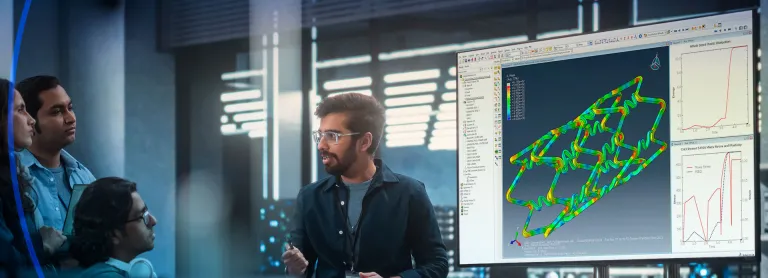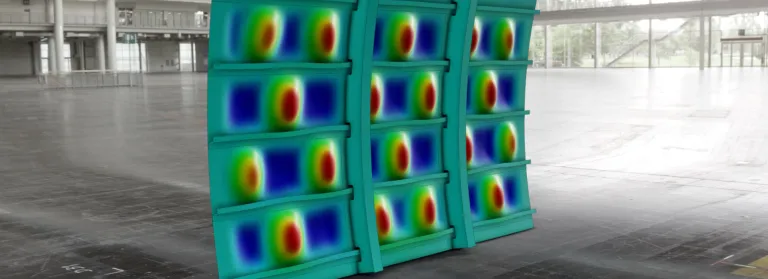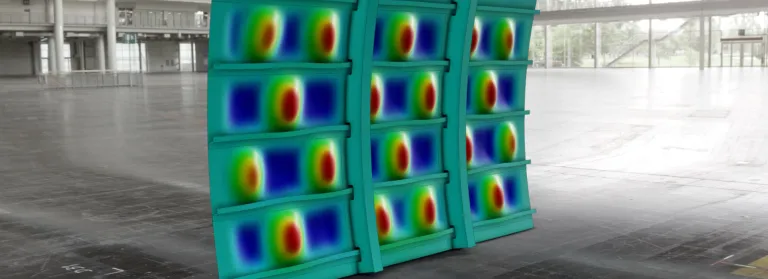Abaqus/Explicit
Solution Technology for Highly Nonlinear Transient Events
Dynamic Simulation Excellence
Abaqus/Explicit is an explicit-dynamic finite-element solver most suitable for simulating brief transient and dynamic events such as drop tests of consumer electronics, automotive crashes, and ballistic impacts. The growing popularity of Abaqus/Explicit is due to its unique expertise in handling nonlinear behavior effectively. It makes Abaqus/Explicit ideal for simulating many quasi-static events, such as the rolling of hot metal and slow crushing of energy-absorbing structures. The key elements of its architecture are ease of use, reliability, and efficiency for production environments. The Abaqus/CAE modeling environment supports Abaqus/Explicit for all common pre- and post-processing.
Abaqus/Explicit and Abaqus/Standard are designed to work cohesively, allowing you to couple the two solvers. You can continue a simulation that starts in Abaqus/Standard, in Abaqus/Explicit and conversely. The importing functionality allows users to apply Abaqus/Explicit to specific portions of the analysis that suit an explicit-dynamic solution technique. Alternatively, users can apply Abaqus/Standard to those portions of the analysis that are more suitable for an implicit solver.
- Analysis Types
- Element Types
- Material Models
Analysis Types
- Nonlinear dynamic stress analysis
- Acoustics
- Multi-physics procedure for thermal/structural simulation
- Discrete Element Method (DEM) for particle simulations
- Coupled Eulerian-Lagrangian simulation
- Smooth Particle Hydrodynamics (SPH)
Element Types
- Linear solid elements for stress analysis
- Quadratic tetrahedral elements for stress analysis
- Structural elements: Shell elements, beam elements, truss elements, membrane elements
- Elements for coupled thermal/structural simulations
- Special elements for modeling
- A wide range of kinematic behaviors
- Spot welds
- Adhesive connections
Material Models
- Linear elasticity and viscoelasticity
- Nonlinear viscoelasticity
- Isotropic and kinematic plasticity
- Damage and fracture mechanics
- Low-density, rate-dependent foam
- Equation of states, including non-Newtonian fluids and ideal gases
Start Your Journey
Explore the technological advancements, innovative methodologies, and evolving industry demands that are reshaping the world of Non-linear and Transient Dynamic Events Simulation. Stay a step ahead with SIMULIA. Discover Abaqus Explicit now.
FAQs About Explicit Dynamics
Also Discover
Learn What SIMULIA Can Do for You
Speak with a SIMULIA expert to learn how our solutions enable seamless collaboration and sustainable innovation at organizations of every size.
Get Started
Courses and classes are available for students, academia, professionals and companies. Find the right SIMULIA training for you.
Get Help
Find information on software & hardware certification, software downloads, user documentation, support contact and services offering





